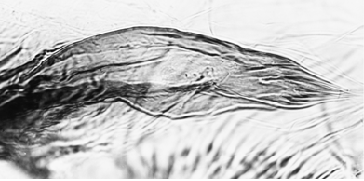nzlA1: 1a-e, 11 - 10, 2c - 1f, 3e - 2d, 8 - 9, 3f-i, 12c-a, 4 - 7, 13 - 19 ie. as A4 oppositus
nzlA2: 1a-e, 11 - 10, 2c - 1f, 3e - 2e, 7 - 4, 12a-c, 3i - f, 9 - 8, 2d, 13 - 19
nzlA3: 1a-e, 13a-f, 2d, 8 - 9, 3f-i, 12c-a, 4 - 7, 2e - 3e, 1f - 2c, 10 - 11, 14 - 19
nzlB1: Large puff (group 7) with distal dark bands, near middle of arm.
nzlB2: Possibly the result of overlapping inversions. Puff with reduced dark bands nearer distal end of arm.
nzlB3: Derived from B2 by a short inversion of the region with the puff, so that the reduced dark bands are now proximal. May only be in sp. NZ12
nzlC1: Characteristic band groups 3-4, with 5 distal, near distal end Appears similar to C. tepperi, C. 'pseudoppositus' and C. 'spilleri'
nzlC2: small median inversion
nzlC3: inversion of most of arm
nzlC4: small inversion near distal end
nzlD1: 1 - 2, 16 - 10d, 3a-d, 9 - 3e, 10a-c, 17 - 24 ie. as australis D1
nzlD2: 1 - 2, 16c-a, 17e-a, 10c-a, 3e - 9, 3d-a, 10d -15, 18 - 24
nzlD3: 1 -2, 16 - 11, 4c - 9, 3d-a, 4ba - 3e, 10a-c, 17 - 24
nzlE1: 1 - 3e, 10b - 3f, 10c - 13 ie. as oppositus E1, analis, forsythi
nzlE2: 1a-c, 5 - 10b, 3e - 1d, 4 - 3f, 10c - 13
nzlE3: 1a-c, 5 - 7c, 10g-c, 3f - 4, 1d - 3e, 10b - 7d, 11 - 13 may only be in sp. NZ12
nzlF1: 1 - 2a, 10 - 2c, 15c - 11a, 2b, 15d - 23 ie. as oppositus
F3, australis
nzlF2: 1a-e, 12 - 15c, 2c - 10, 2a, 11i-a, 2b, 15d - 23
nzlG1: Subterminal BR and median BR (often just a pale space).
nzlG2: Inversion of region from BR to near distal end of arm.
nzlG3: Subterminal nucleolus and adjacent BR, or no visible BR.
Pupa: Pupa: about 9.8-10.2 mm long (South Island females); cephalic tubercles about 100 µm long, subapical seta abt 90µm. Thorax and muscle scars pale yellow brown, abdomen relatively pale; shagreen largely in mid-line - on post half of segment II, post 2/3 of segment III and wider on segments IV-VI; none apparent on segments VII-IX.
Basal respiratory ring about 205 µm long, HR about 2.4, with the respiratory bases markedly narrowed in the middle.
About 80 recurved hooks at posterior of segment II, covering about 70% of the segment width.
Pedes spurii B at posterior of segments II and III; a large pedes spurii A on segment IV, about 230 µm long and 95 µm wide, about 0.27 of the segment length.
 Caudolateral spurs of segment VIII sometimes with numerous appressed spines (c.f. C. zealandicus); usually abt 6-9 longer spines and possibly a small one near the base. In some populations with paler larval heads there are only two or three spines. It is probable that some of these would be
Caudolateral spurs of segment VIII sometimes with numerous appressed spines (c.f. C. zealandicus); usually abt 6-9 longer spines and possibly a small one near the base. In some populations with paler larval heads there are only two or three spines. It is probable that some of these would be